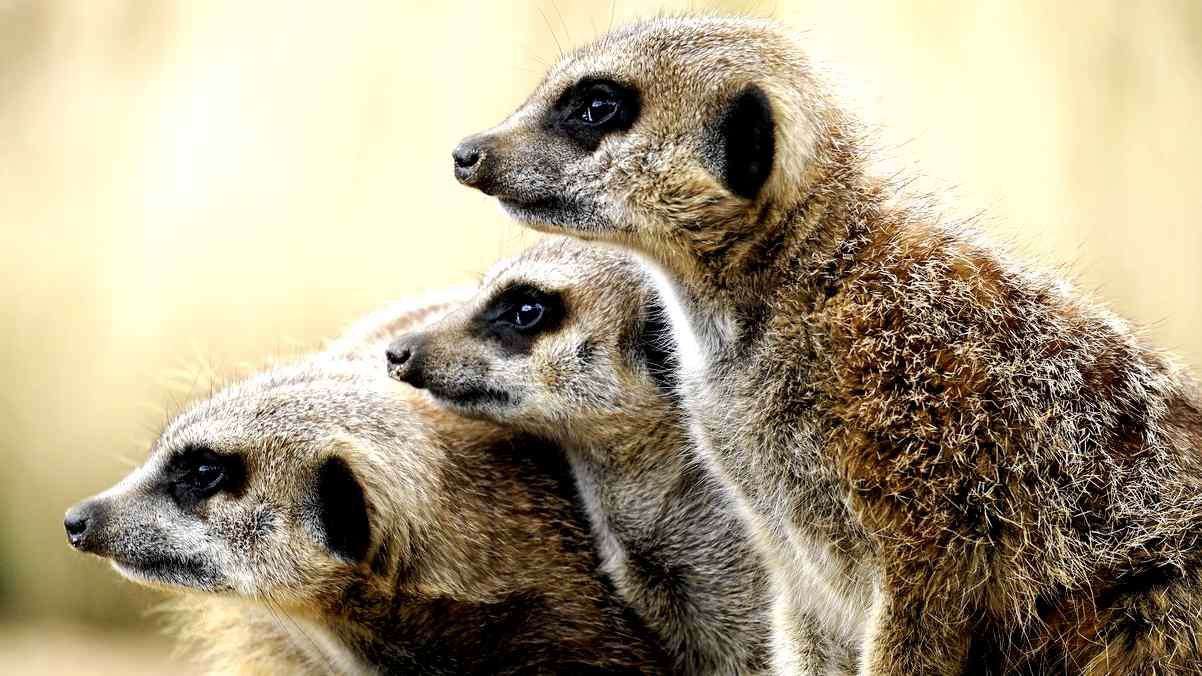A new study on mongoose society has found that because mothers in groups of mongooses all give birth on the same night, this creates a “veil of ignorance” about which pups belong to which moms. And this leads to the pups being raised equitably, in a communal fashion.
The new paper appeared today in the journal Nature Communications, and was written by researchers from the universities of Exeter and Roehampton.
Mongoose moms eagerly redistribute food to whichever pups are hungry
In the new study, half of the pregnant mothers in wild mongoose groups were regularly given extra food, which deliberately led to increased inequality in the birth weights of their pups.
Then sign up for our Psych News Weekly newsletter here!
But after giving birth, the mothers who had received extra food quickly corrected this inequality. They gave extra care to the smaller pups born to the unfed mothers — rather than their own pups — and the pup size differences quickly disappeared.
“In most of the natural world, parents favour their own young,” said co-author Harry Marshall of the University of Roehampton. But in groups of mongooses, the evolution of birth synchrony — whereby the mongoose moms all give birth on the same night, presumably to protect the pups from predators — has led to “the unusual situation that mothers don’t know which pups are their own, and therefore cannot choose to give them extra care.”
How do synchronized mongoose births protect the offspring?
As Science magazine explained in 2010, female mongooses usually gives birth on the same night to ensure the survival of their pups. The mongoose litters “born a day or two earlier than others were 30% more likely to be killed by adult female mongooses.”
That’s because those females don’t want competition for their own kids. So they kill the other moms’ pups while those mothers are out foraging.
“But if the litters are born together, all of the moms are out foraging at the same time—so there’s no one left behind to kill the babies,” the Science article explains. “Similar scenarios in ancient human societies may explain why women often sync up their menstrual cycles if they spend a lot of time together.”
“Our study shows that this ignorance leads to a fairer allocation of resources – in effect, a fairer society,” Marshall said.
The study examined seven groups of banded mongooses in Uganda; the observations began in 1995. Half of the pregnant females in each group received 50g of cooked egg each day. The other half did not receive extra food.
Inequality at birth (measured by weight) was wider in breeding periods when food was provided than in periods where no extra food was given.
“We predicted that a ‘veil of ignorance’ would cause females to focus their care on the pups most in need,” said co-author Michael Cant of the University of Exeter, “and this is what we found.”
“Those most able to help offer it to the most needy, and in doing so minimise the risk that their own offspring will face a disadvantage. This redistributive form of care ‘levelled up’ initial size disparities, and equalised the chances of pups surviving to adulthood,” Cant said.
The “veil of ignorance” works in practice. At least in mongooses.
“Our results suggest that the veil of ignorance, a classic philosophical idea to achieve fairness in human societies, also applies in this non-human society,” Cant said.
In this study, the authors showed that when a subset of mongoose mothers were given additional resources, they “invested disproportionately in smaller, control offspring, not their own young.”
In other words, the “veil of ignorance” leads the mother to invest so as to “minimize the risk that their own offspring will face a disadvantage.”
This paper shows that “uncertainty about kinship in a non-human species can lead to a redistribution of resources to reduce inequality, consistent with the proposed role of the veil of ignorance in the evolution of human fairness norms.”
Study: “A veil of ignorance can promote fairness in a mammal society”
Authors: H. H. Marshall, R. A. Johnstone, F. J. Thompson, H. J. Nichols, D. Wells, J. I. Hoffman, G. Kalema-Zikusoka, J. L. Sanderson, E. I. K. Vitikainen, J. D. Blount, and M. A. Cant
Photo: Joseph Smit – Proceedings of the Zoological Society of London 1901

fivewits on June 23rd, 2021 at 12:56 UTC »
Can you imagine trying to design a study like this for humans?
"Okay, so nobody gets to meet their new baby - right after we cut the cord we whisk it away to a shared infant ward.
After that, you'll all need to live close enough together to have equal impact opportunity on the newborns for... probably at least the first six months.
Try to ignore any telltale differences in skin, hair, or eye coloration."
Dankyness on June 23rd, 2021 at 12:39 UTC »
While ironically being the highest intra-species murder rate
SleepinginRlyeh on June 23rd, 2021 at 10:30 UTC »
But why is it a photo of meerkats?